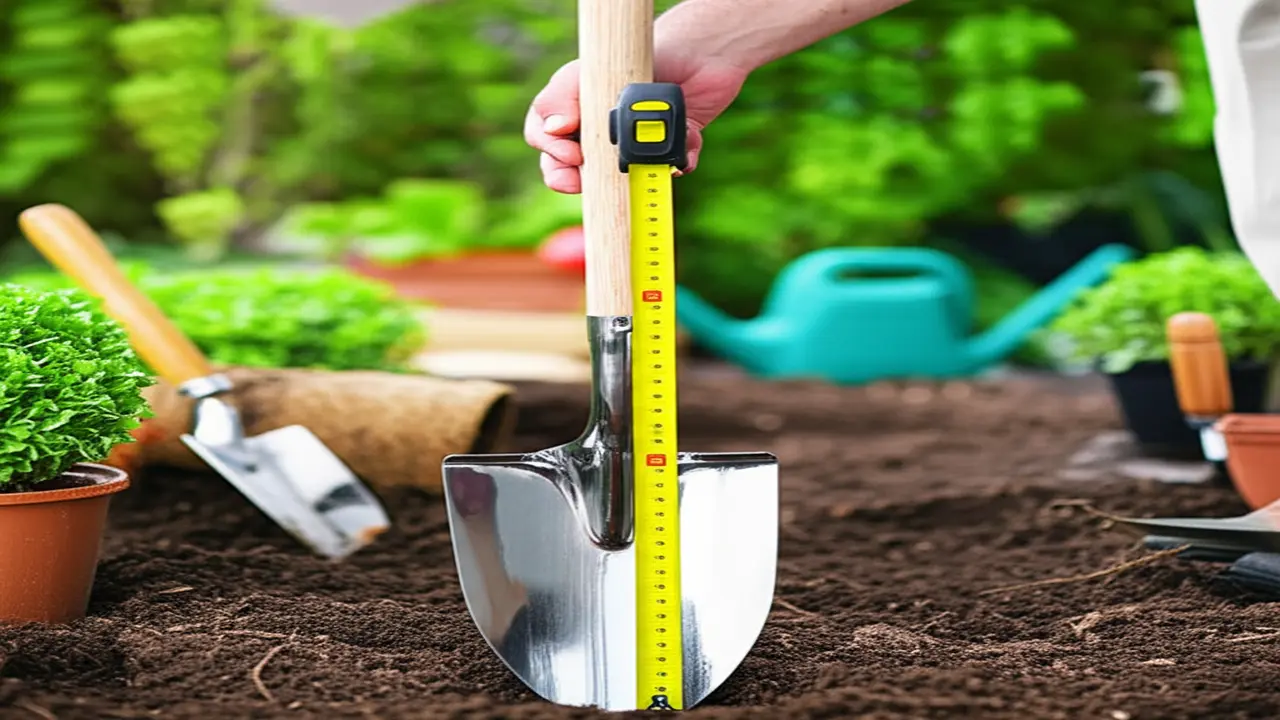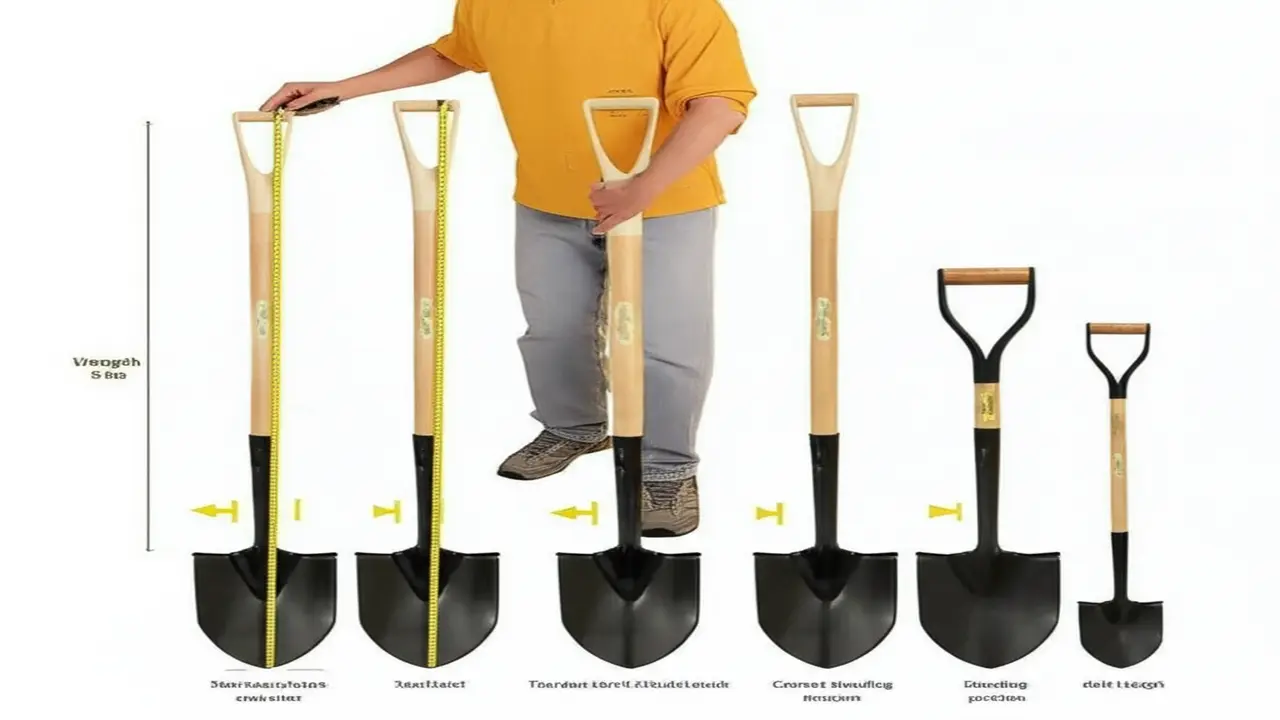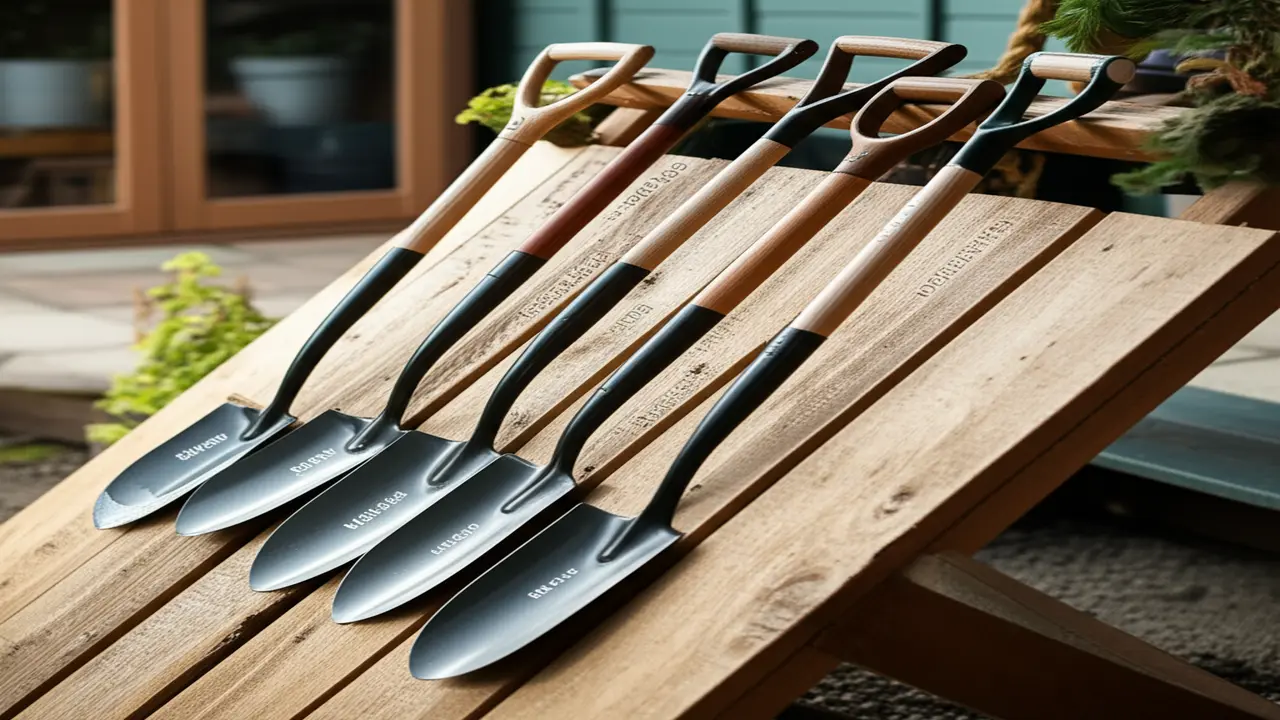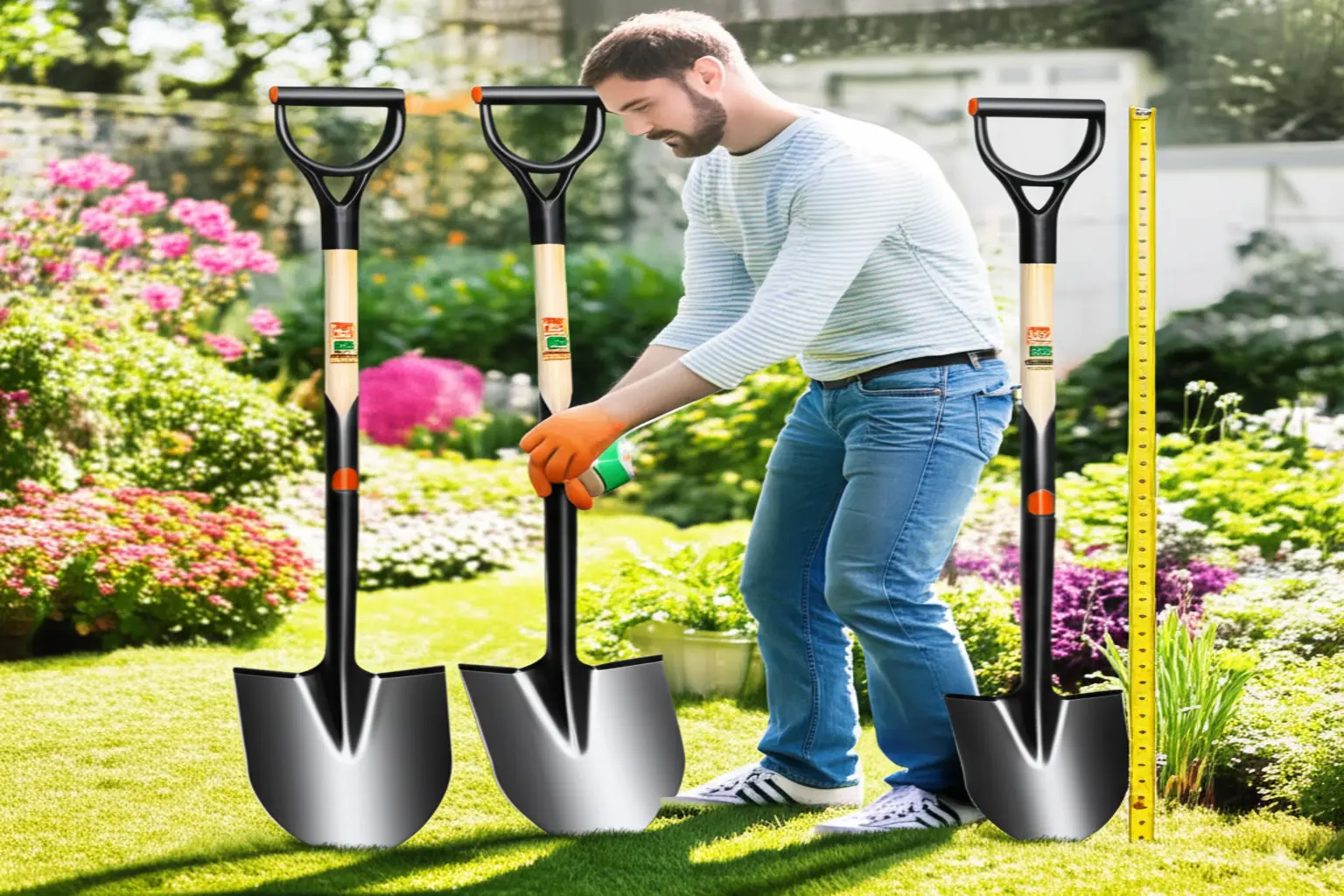1. Why Spade Length Matters
The garden spade length guide confirms that choosing the correct spade length is critical for efficiency and comfort in gardening. A spade that is too short forces you to bend excessively, increasing back strain and fatigue during prolonged digging or transplanting. Conversely, a spade that is too long can reduce leverage and control, making precise tasks difficult and tiring your arms more quickly.
Ideal spade length balances user height and the task at hand. For example, gardeners around 5’6″–5’10” will find handles between 30 and 36 inches optimal, which helps maintain a natural posture and leverage. This reduces muscle strain and improves digging power, enabling easier penetration of soil, turning compost, and edging.
Moreover, the right length enhances task efficiency by improving control, reducing slips and mistakes. Various gardening activities—from cutting roots to shaping beds—benefit from a spade matched to your body size and strength. Adjusting spade length can even prevent long-term injuries common in gardeners.
For detailed tips on spade design that supports comfort and performance, see our review of ergonomic garden spades. This internal resource explains choices that complement the right length to maximize ease and durability in your garden tools.

2. Determining Your Ideal Spade Length
3. Matching Spade Length to Gardening Tasks
In 2025, understanding the right garden spade length guide is essential to optimize your gardening tasks efficiently. Different jobs demand specific spade characteristics, notably length and weight, to ensure both effectiveness and ease of use. For deep digging, a longer spade, typically with a handle length of around 36 inches or more, provides better leverage and reach. This makes it easier to penetrate tough soil layers without excessive bending, reducing strain during heavy-duty work.
Conversely, edging tasks benefit from shorter spades, usually between 24 and 30 inches in length. These offer greater control and precision, especially when working in confined or intricate garden bed edges. The lighter weight of a shorter spade also enhances maneuverability, ideal for repeat trimming along borders.
For transplanting, a moderate length spade of about 28 to 32 inches is recommended. It strikes a balance between digging depth and maneuverability, allowing careful root handling without damaging neighboring plants. Here, a lighter weighted spade reduces fatigue during detailed transplanting.
Selecting the correct garden spade length depends on the complexity of the task and the spatial constraints of your workspace. Prioritize longer spades for power and reach, shorter ones for precision and control. For reference on selecting quality tools suited for varied gardening needs, consider exploring our best garden spades 2025 guide for expert reviews and recommendations tailored to your gardening projects.
4. Types of Garden Spades and Their Standard Lengths
Garden spades come in several specialized types, each designed for different gardening tasks and available in standard lengths suitable to those uses. Understanding the garden spade length guide is essential for choosing the right tool that matches your gardening needs and body ergonomics. Here are the common types:
– Digging Spades: These are your traditional garden spades with a long handle typically ranging from 28 to 36 inches. They provide leverage for digging deep into soil, turning earth, or transplanting. The longer handles reduce back strain during intense digging.
– Border Spades: Smaller and often shorter, border spades usually measure between 18 and 24 inches. Their compact size makes them ideal for shaping and edging garden beds where maneuverability in tight spaces is needed.
– Drain Spades: Featuring a narrow, pointed blade and a handle length of about 30 to 36 inches, drain spades are specialized for digging trenches or narrow ditches to improve drainage. The pointed tip easily penetrates compacted ground.
Choosing spade length depends not only on task but also user height and strength. For example, gardeners under 5 feet may prefer shorter handles to maintain control, while taller gardeners benefit from longer handles for better leverage.
Selecting the correct type and length increases efficiency and reduces fatigue, which is why referring to a detailed garden spade length guide helps in making an informed decision. For more tips on caring for your garden tools, see our article on garden spade maintenance. This ensures your spade stays effective and lasts through multiple seasons.

5. Practical Methods to Measure and Test Spade Length Fit
To choose the right garden spade length, follow practical methods based on the garden spade length guide tailored for 2025 users. First, apply the “hip height” rule: stand upright and position the spade handle so its top aligns approximately with your hip. This ensures the spade length matches your body, reducing strain during use. Next, perform the arm angle comfort test by gripping the handle and bending your elbow at about 90 degrees; the handle should allow natural arm positioning without overreach or excessive bending.
Additionally, simulate digging motions to assess if the spade’s length supports efficient soil penetration and comfortable leverage. Handle design and grip style matter: D-shaped handles often provide better control for digging, while straight handles may suit certain tasks and user preferences. Grip comfort also influences effective length feel, so test different grip types if possible.
These methods help avoid common mistakes like choosing a spade too short, causing back strain, or too long, leading to poor control. For more detailed guidance on garden tools’ ergonomics, see our article on ergonomic garden spades. By measuring and testing the spade length with these practical approaches, gardeners can enhance comfort, efficiency, and safety in their outdoor work.

6. Balancing Comfort, Efficiency, and Durability in Your Choice
Choosing the right garden spade length integrates more than just fitting your height or task. To balance comfort, efficiency, and durability, consider these three key elements carefully:
– Spade Length and User Height: A spade matching your height ensures comfort and reduces strain. For tasks like digging or transplanting, the right length offers better control and leverage.
– Material Quality: Stainless steel spades resist rust and require less maintenance, suitable for wet soil; carbon steel offers strength but needs proper care to avoid corrosion. Durable materials guarantee longer tool life under frequent garden use.
– Handle Style and Grip: Ergonomic handles with appropriate grip materials enhance comfort and prevent blisters during prolonged use. Wooden handles absorb shocks well, whereas fiberglass handles can provide durability and reduce weight.
Selecting a spade that balances these factors increases gardening efficiency, minimizes fatigue, and ensures longevity of the tool. For detailed options on durable and ergonomic spades, explore our guide on best garden spades 2025. This balance plays a vital role in effective garden management and gives you the confidence to handle demanding tasks comfortably and reliably.
7. Troubleshooting Length-Related Issues
When dealing with garden spade length guide concerns, common issues include spades feeling either too long or too short for effective use. A spade that’s too long can be unwieldy, causing strain on the back and arms, while a too-short spade may limit leverage and digging depth. To resolve these problems, consider the following adjustments and alternatives:
– Choose ergonomic garden spades with adjustable handles to accommodate your height and improve comfort.
– For users finding standard spade lengths cumbersome, a mini garden spade offers better maneuverability in tight spaces but might sacrifice digging power.
– In scenarios requiring deep digging, a long-handle garden spade provides enhanced reach, reducing the need to bend excessively.
– Those with limited strength or flexibility may benefit from lightweight or specially designed spades with optimized grip comfort.
If persistent discomfort occurs, exploring other tools like the best hand cultivators can complement tasks that do not require the full extension a spade offers. Additionally, proper technique, such as the correct digging spade technique, ensures efficiency and reduces strain during gardening.
Addressing length issues is essential for both safety and effectiveness in gardening. Selecting the appropriate spade size based on your body dimensions and gardening needs maximizes efficiency and reduces fatigue. Always consider trying before purchasing when possible and consult reliable guides to find the perfect fit.

